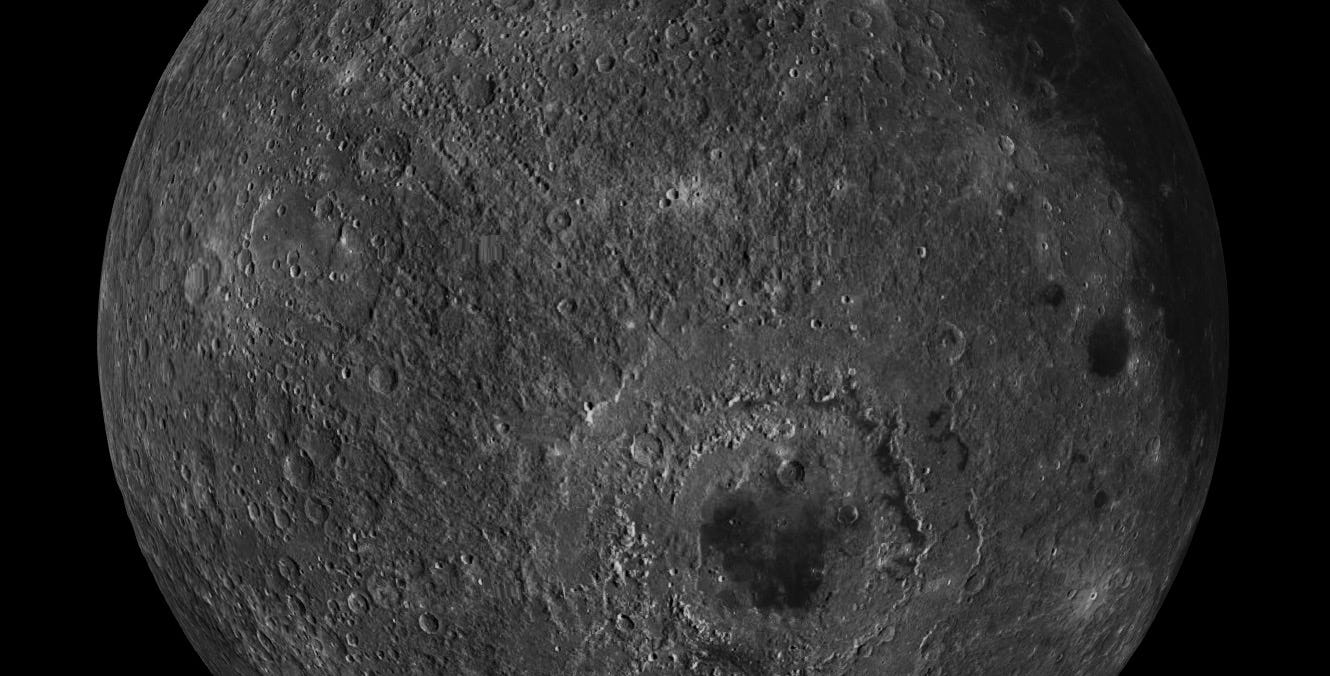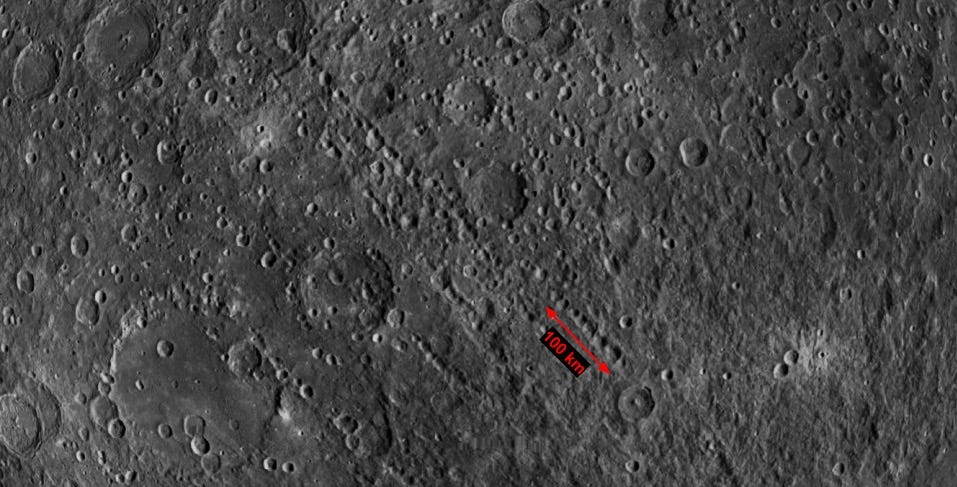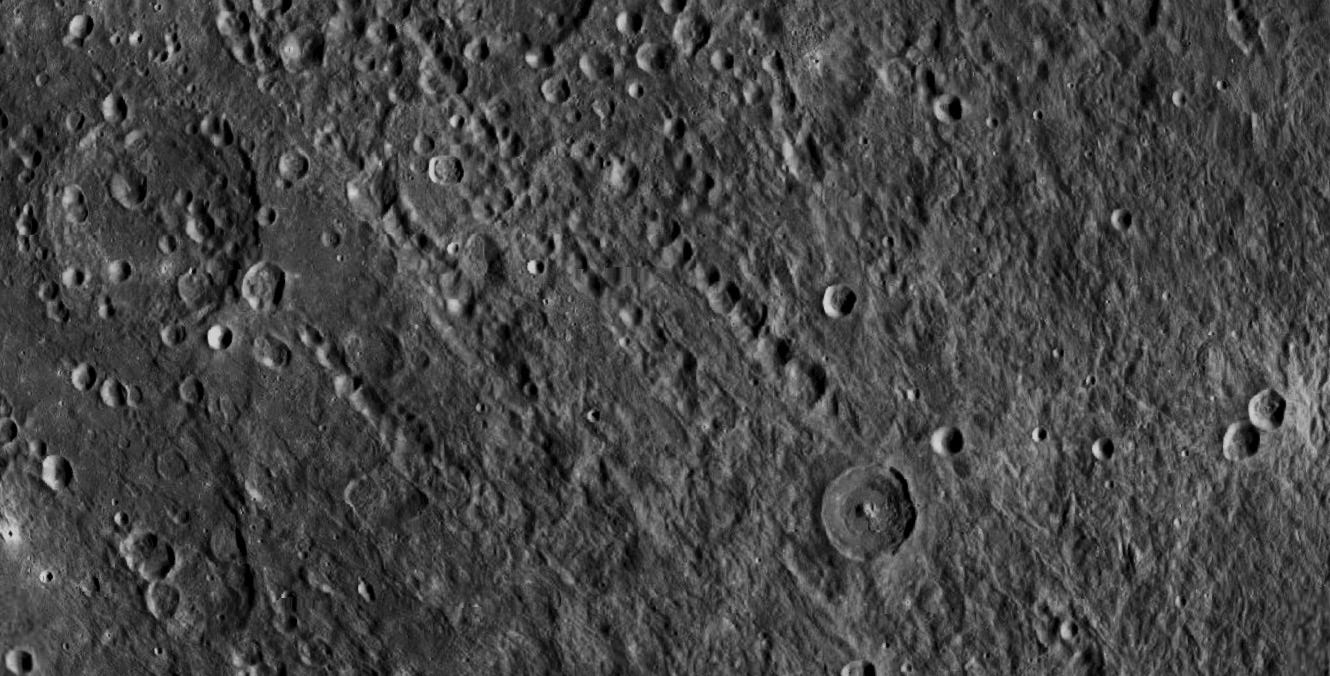Outstanding crater chains of the Orientale basin on the Moon
They indicate the intensity of the impact that formed Orientale.
Seen here are chains of craters surrounding the incredible Orientale basin.

Can you see the sheer number of craters radiating out of the Orientale basin in all directions? These are secondary craters, formed during the impact that formed Orientale itself.
When an impact crater forms on a high-velocity asteroid/comet hitting the surface, it kicks out materials in the region in a projectile fashion. Depending on the energy imparted to the ejected materials, they travel farther from the impact site and either hit the ground or escape the Moon altogether. Materials hitting the ground form craters. If lots of material impact the surface at varying successive distances, you get chains of craters. And that is exactly what we see in the case of Orientale's secondary craters.
Let's take a closer look at the crater chains northwest of the Orientale basin.


Each of the craters in the chain marked with a scale is more then 10 kilometers across! There are more than 4-5 such crater chains in the selected region alone. Such large craters chains are found in all directions radial to the Orientale basin. And some are found as far as halfway across the Moon from Orientale!
Imagine hundreds of town sized rocks being thrown away during the formation of Orientale basin, flying off as far as a thousand kilometers and forming large, secondary craters on hitting the ground. What an impact Orientale must have been!
Scientists determine ages of features in the solar system based on absolute ages of impact craters. However, secondary craters like ones around Orientale are not true impact craters and thus skew the age determination process. Although secondaries are good proxies to learn about conditions of the original impact and material properties at the primary impact site.
Orientale's secondary chains are mind blowing and most definitely my favorite lunar feature. I'd be lying if I said the same about other lunar features elsewhere. Even the previously covered Schrödinger crater has beautiful craters chains marking their presence.
Go explore all the secondary craters surrounding the Orientale basin in the map linked below. Count them if you like.

